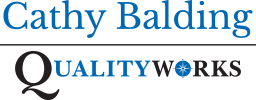Plan to be great - not just to survive
An improvement plan should be a simple task, but it’s easy to over-complicate it. Basically, you want to know: Where are we now? Where do we want to be X months/years from now? How will we get there? The tricky bit is often in the ‘Where do we want to be?’ question. Quality improvement destinations can be hard to conceptualise, so we often end up describing what processes we want to have in place, rather than the destination we want to reach as a result. This is a bit like planning a holiday by making a list of all the things you have to do: packing, working out who will look after things while you’re away, identifying the mode of transport and the activities you’d like to include – without identifying where you’re going. You may get organised and experience some fun activities, but do you end up in the best possible place?
Many quality plans are elaborate ‘to do’ lists. These are satisfying to tick off as they’re accomplished, but difficult to assess in terms of what difference all those tasks made. Quality programs can become three or four year groundhog cycles – lots of work and effort going into essentially the same tasks, showing the same results on monitoring graphs year after year. Without a clear idea of how you want thing to be different as a result of all those tasks – great consumer experience; positive staff attitudes and actions; strong organisational reputation; inspirational Board leadership – the tasks on your to do list become ends in themselves. And another year of hard work and frustration passes with the old challenges – staff and executive engagement, data collection and reporting, sustained change, meeting standards – just getting more challenging.
So always start your quality planning by first identifying and describing your desired destination for consumers and staff – in concrete, specific terms – and work out from there the processes and actions you need to get you there.
